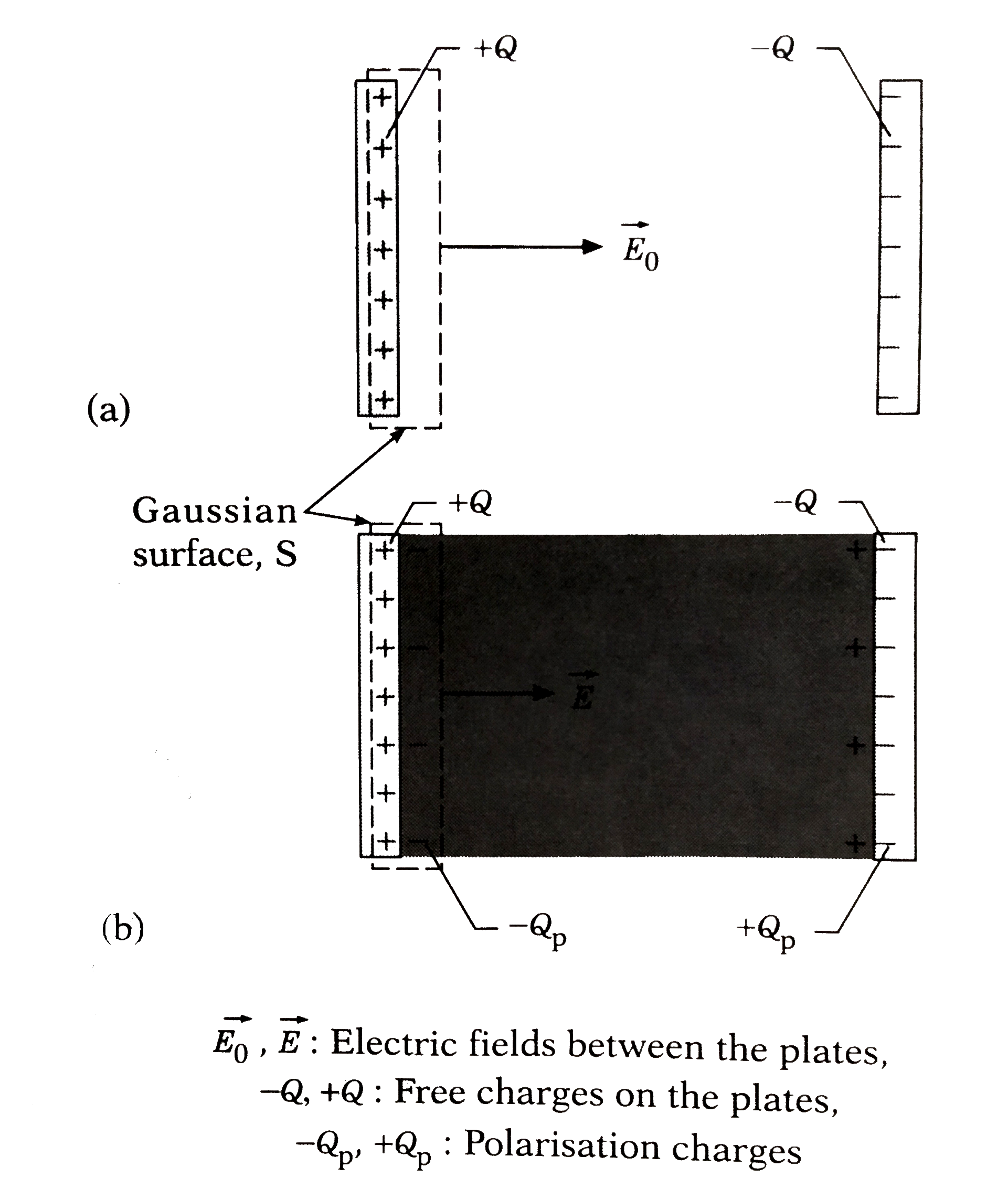InterviewSolution
Saved Bookmarks
| 1. |
A dielectric of relative permittivity (dielectric constant ) k completely fills the space betweenthe plates of a parallel-plate capacitor with a surface charge density sigma. Show that (i) the induced density of surface charge on the dielectric is sigma_(p)=sigma(1-(1)/(k)) (ii) the capacitance of the capacitor is increased by a factor equal to the ratio of the electric field without the dielectric to that with the dielectric. |
|
Answer» Solution :CONSIDER a parallel-plate capacitor without a dielectric, of plate area A, plate separation d and capacitance `C_(0),` charged to a potential difference V and then isolated. Suppose the free charges on its conducting plates are +Q and -Q, FIG. (a). The surface density of free charge is `sigma =(Q)/(A) ""` ...(1) If A is very large and d is very small, the electric field in the region between the plates is almost uniform, except at the edges. The magnitude of the electric field intensity is `E_(0)=(V)/(d)=(sigma)/(epsilon_(0))=(Q)/(epsilon_(0)A) "" ` (2) Now, suppose a dielectric completely fills the space the charged plates. A polarisation charge - `Q_(p)` appears on the exterior surface of the dielectric nearer to the POSITIVE platewhile a polarisation charge `+Q_(p)` appears on its opposite face. Since the capacitor was isolated after charging, the free charge Q on the plates is the same as earlier.  Consider the Gaussian surface S as shown in Fig. (b). It encloses free charge +Q on the left plate and the bound polarisation charge - `Q_(p)` on the surface of the dielectric. The net charge enclosed by `S=Q-Q_(p).` `therefore` By Gauss's theorem, the TNEI over the Gaussian surface is `epsilon_(0) underset(s) int vecE* d vecS=epsilon_(0)EA=Q-Q_(p)` `therefore` The magnitude of the electric field intensity in the dielectric is `E=(Q-Q_(p))/(epsilon_(0)A)=(Q)/(epsilon_(0)A)-(Q_(p))/(epsilon_(0)A)=(sigma)/(epsilon_(0))-(sigma_(p))/(epsilon_(0)) "" ` ...(3) Writing `E=(E_(0))/(k),` where k is the relative permittivity (dielectric CONSTANT) of the MEDIUM, `(E_(0))/(k)=(sigma)/(epsilon_(0))-(sigma_(p))/(epsilon_(0))` ` therefore (sigma)/(k epsilon_(0))=(sigma)/(epsilon_(0))-(sigma_(p))/(epsilon_(0))` `therefore (sigma)/(k)=sigma-sigma_(p)` `therefore` The surface density of induced charge is `sigma_(p)=sigma-(sigma)/(k)=sigma(1-(1)/(k)) "" ` ...(4) Without the dielectric, the capacitance of the capacitor is, `C_(0)=Q//V.` `therefore Q=C_(0)V=C_(0)E_(0)d "" ` ...(5) Let the capacitancewith the dielectric be C. Since the free charge Q remains the same,`Q=CEd "" `...(6) Equating the right hand sides of Eqs. (5) and (6), `CEd = C_(0)E_(0)d` `therefore C=C_(0)((E_(0))/(E))=kC_(0) "" ` ...(7) Thus, the capacitance increases by the factor of `k=E_(0)//E.` |
|